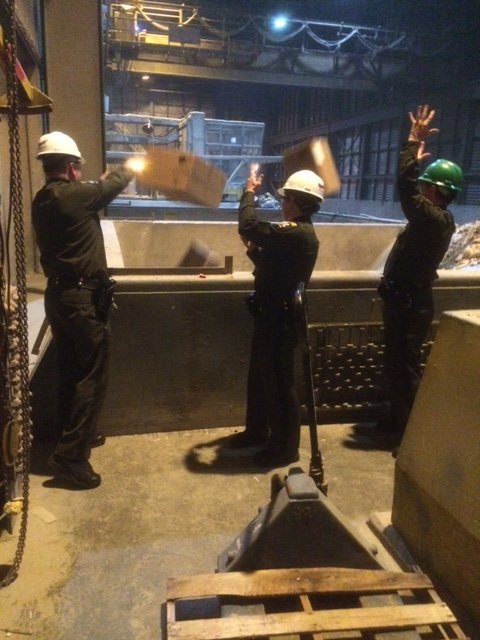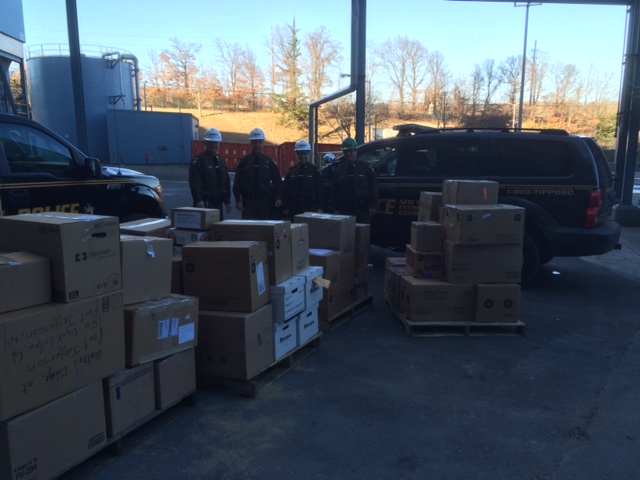Long Island, NY - February 24th, 2016 - The New York State Department of Environmental Conservation (DEC) collected 720 pounds of pharmaceutical medications during the second DEC Long Island Pharmaceutical Take Back, Region 1 Director Carrie Meek Gallagher announced today.
A total of twenty-seven long-term healthcare facilities throughout Nassau and Suffolk counties participated in the program, which collects and responsibly destroys unused or expired pharmaceuticals.
"Health care facilities such as nursing homes and other long-term care facilities normally have little choice but to “flush” unused medications," said Director Gallagher. "DEC will continue our efforts to reduce medications entering our waterways and we are grateful to all the facilities who chose to enthusiastically participate in this year’s take-back day."
Last year DEC received funding through a State Legislative Appropriation for $150,000 to collect unused and unwanted pharmaceuticals from medical facilities in Nassau and Suffolk counties. The program is designed to reduce the amount of pharmaceuticals that are "flushed" by facilities and can end up in Long Island's groundwater, bays and estuaries. Pharmaceuticals have been detected at low levels in New York State waterways and Long Island's shallow groundwater.
Adrienne Esposito, Executive Director of Citizens Campaign for the Environment said, “We applaud the DEC for implementing this successful drug take-back program, which prevents pharmaceutical contaminants from entering Long Island’s water. Long term care facilities are potentially significant contributors to pharmaceutical contamination in ground and surface waters. Easy, safe disposal options are imperative for these facilities.
Last year, DEC launched this program and collected 52 boxes of unused medications on the first take-back day. Now, we need to continue to grow this great program and ensure that all health care facilities are safely disposing of unused medications.”
Twenty-seven facilities made up primarily of nursing, extended care and rehabilitation centers, agreed to participate in this year’s collection, up from the 25 that participated the previous year. Each facility stored unused and expired medications until DEC Environmental Conservation Officers (ECOs) visited them at their facility on Monday, February 22. The stored medications were brought to the Covanta Waste-to-Energy Plant in Huntington, which volunteered its services to incinerate the products.
“Covanta is very proud to provide a program for the safe disposal of drugs allowing us to both assist in the prevention of drug abuse and in the protection of our waters,” said John G. Waffenschmidt, Covanta Vice President of Environmental Science and Community Affairs.
“We are also happy to join with the Department of Environmental Conservation and Citizens Campaign for the Environment in their important work to end the practice of flushing drugs by residents and institutions. Our Energy-from-Waste facilities are equipped with state-of-the-art combustion controls and air pollution control equipment to ensure the secure destruction of these drugs in an environmentally sound manner."
Covanta’s Energy-from-Waste facilities in Westbury, East Northport, West Babylon and Ronkonkoma serve the municipal solid waste management needs of thousands of Long Island households and businesses, converting nearly 5,000 tons of post-recycled municipal solid waste each day into clean energy to power over 100,000 homes. The facilities also recycle 50,000 tons of metal annually.
Prescription drug take back efforts began in the last few years. Prior to these initiatives the normal disposal practice was to flush unwanted drugs. With technological advances in analytical techniques, it is now possible to detect very low levels of drugs in surface water and groundwater.
Some drugs pass largely unaltered through wastewater treatment plants and enter rivers and other waterways. Drugs from heath care facilities, pharmaceutical manufacturing facilities and farms can also find their way into the water.
Flushed medications have been found in New York lakes, rivers and streams which can negatively affect the waterways. A nationwide study done in 1999 and 2000 by the United States Geological Survey (USGS) found low levels of drugs such as antibiotics, hormones, contraceptives and steroids in 80 percent of rivers and streams tested. Medications adversely affect fish and other aquatic wildlife and increase the development of drug-resistant bacteria.
















